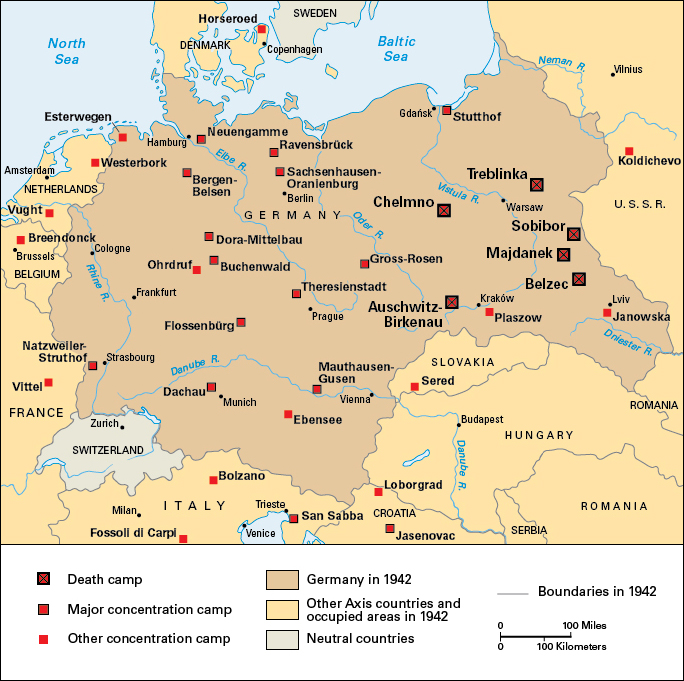Treblinka, << truh BLIHNG kuh, >> was a death camp set up in Poland by Nazi Germany during World War II (1939-1945). The killing center stood near the village of Treblinka, about 50 miles (80 kilometers) northeast of Warsaw, Poland’s capital. Treblinka was one of several camps involved in Aktion Reinhard (Operation Reinhard), a Nazi plan to kill the roughly 2 million Jews living in German-occupied territory in what had been central Poland. German Schutzstaffel (SS) troops and police managed the Reinhard death camps. The SS was a special Nazi military group.

Treblinka consisted of two separate camps. The first camp, Treblinka I, opened in 1941. The camp served as a penal facility for Jews and Polish political prisoners, who were forced to work in a nearby quarry. The camp was built along a railway line in a remote forested region. The camp’s prisoners worked under terrible conditions, and many died from starvation, disease, or harsh treatment. Treblinka I operated until late July 1944, when the Nazis killed the remaining prisoners and dismantled the camp.
A second camp, Treblinka II, opened nearby in July 1942. Treblinka II served only as a death camp. A ring of trees and branches woven into the encircling barbed-wire fence helped hide the camp from the outside. A rail line brought prisoners from Treblinka I, Warsaw, and elsewhere. Prisoners were unloaded, separated by sex, and forced to surrender their possessions. A few people, including some with special skills or trades, were used for forced labor. The others were stripped, and the women had their hair cut off. All were led into gas chambers. The Germans piped deadly carbon monoxide gas into the chambers, killing the people inside. The bodies were then buried in mass graves or burned.
In August 1943, prisoners at Treblinka II revolted. They set fire to the camp, and many tried to escape into the surrounding forest. Hundreds were killed during the attempt, but a few prisoners escaped and survived the war. After the revolt, the Germans killed the remaining prisoners and dismantled the camp. To erase all evidence of Treblinka II, the Germans planted crops over mass graves and turned the area into a farm. Investigators later reconstructed the camp’s history from documents, accounts of survivors, and the postwar trial testimony of camp officials.
The Germans murdered about 900,000 people at Treblinka—mostly Jews from Poland and nearby countries. A number of Poles, Soviet prisoners of war, and Roma (sometimes called Gypsies) also died in the camp. Today, a large memorial complex stands on the camp’s former grounds.
See also Concentration camp ; Holocaust ; Nazism ; Schutzstaffel (SS) .
